
All categories
Featured selections
Trade Assurance
Buyer Central
Help Center
Get the app
Become a supplier

(8218 products available)




















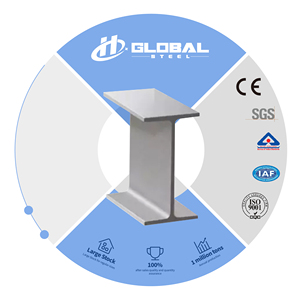




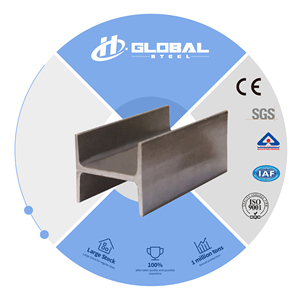




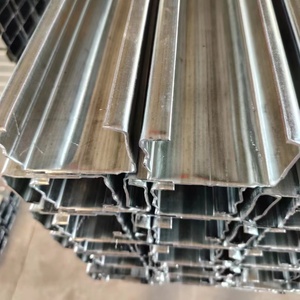


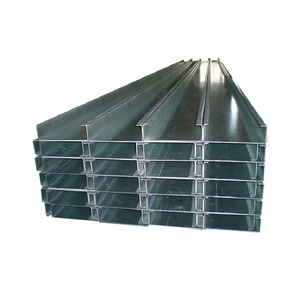
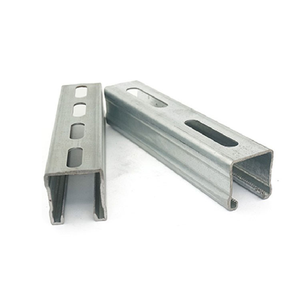

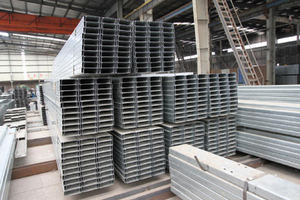
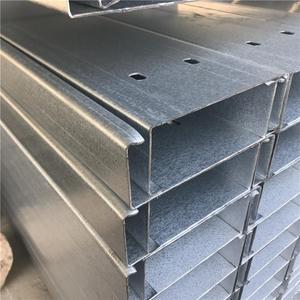
Perforated steel beams have various types developed to suit different needs in construction. The perforated steel beam's shape and hole configuration can significantly affect the beam's strength, stiffness, and functionality. Common types include:
I-shaped perforated steel beams
The I-beam configuration provides excellent load-carrying capability and the stiffest under transverse loading compared to other shapes. Perforations are usually located in the web section to minimize the effect on strength while allowing for lighter construction and reduced material usage.
H-shaped perforated steel beams
Also known as anti-fall beams, H-beams have flanges that are wider than I-beams, providing better resistance to bending. This shape is often used in heavy construction applications, and the perforated hole patterns can be designed for specific aesthetic or functional purposes.
C-shaped perforated steel beams
C-beams or channels have perforations typically located along the web but can extend to the flanges. While not as strong as I or H-shaped beams, C-beams are suitable for lighter load applications and can serve as useful supports or frameworks.
Angle-shaped perforated steel beams
The angle beam configuration is highly versatile and can be used in various structural applications. Common perforated steel hardware includes angle brackets and angle beams. Angle beams are particularly useful in truss designs, bracing, and other frameworks requiring high strength and stability. Moreover, the angled flanges provide greater resistance to twisting and bending compared to other beam shapes.
Construction and Building Frameworks
Perforated steel beams are commonly used in construction to support structures such as ceilings and floors. Their combination of strength and lightweight makes them a suitable replacement for concrete beams. Besides, the perforations help in reducing the weight of the beam with minimal loss of strength. The holes also allow installations of electrical, plumbing, and air duct systems within the structure's framework, reducing the need for extra space.
Fenestrated paver application in bridges and walkways
Perforated steel beams are often used in the construction of bridges and walkways. Their high strength enables them to carry heavy loads, while the holes make them lighter, easier to handle, and more affordable. Also, the perforations enhance the bridge or walkway designs and reduce wind resistance, making them more stable in harsh weather conditions.
Demountable and temporary structure solutions
Perforated steel beams are favored in the construction of temporary structures like scaffolding, staging, and frameworks for interior partitioning walls. Their lightweight makes it easier to assemble and disassemble, and their hollowness offers convenience in carrying and setting up in different locations. They also afford good resistance to weather elements, ensuring they remain durable for extended use outdoors.
Trusses and Support Systems in Roofs and Bridges
Perforated steel beams are also applied in constructing trusses and supporting frameworks in roof systems and bridges. Their high strength and low weight make them suitable for carrying heavy loads while easy to work with during installation. The holes also help in minimizing material costs without compromising the beam's structural integrity.
Industrial Rack systems for installations and storage structures
In warehouses and manufacturing facilities, perforated steel beams are used in rack systems to support heavy materials and equipment. The robust nature of these beams enables them to handle substantial weight and the perforations provide air passage through the materials on the rack, promoting ventilation.
Here are several important perforated steel beam features:
Material composition
Perforated steel beams are typically made of mild steel alloyed with carbon, maintaining a good balance of ductility and toughness, and making it easier to shape and weld the steel without cracking. Stainless steel has steel alloys with nickel and chromium. This makes the steel highly resistant to corrosion, even in adverse weather or water environments. Galvanized steel is coated with zinc to prevent rust. Thus, the beams are often treated to extend their lifespan and reduce maintenance requirements.
Beam dimensions
Typical I-beams are 4 to 12 inches deep and come in lengths of up to 40 feet. Most perforated steel beams have holes with diameters of 1/4 to 1 inch. The hole sizes and patterns vary according to the structural requirements and the intended use of the beam. Their configurations often include round, slotted, or oval shapes to strengthen the steel structure while allowing passage for light, air, or other materials.
Customizability and coating options
Perforated steel beams can be easily customized in terms of hole size, shape, and pattern and adapted to meet specific projects' structural and aesthetic needs. The beams can be coated with paints or polymer-based materials to offer further corrosion protection and increase their visual appeal.
Preparing the site and making the holes: The construction area should be properly cleaned and all the existing debris removed. After this, the steel beams should be measured and cut to the required length. Perforated steel beams suppliers provide users with guides on where to make the holes. A power drill or laser should be used to make the holes, depending on the user's skill level and tools at hand.
The beams should then be secured on a flat work surface using clamps, ensuring safety during the drilling process. When using a flam, the operator should turn on the flame to a medium heat and bring the steel close to the flame. Once the steel has heated up, it should be placed in a mold or the desired shape should be stamped. After this, the steel should then be placed in cold water to cool and harden.
Concrete should then be poured into the area where the steel will be placed. Once the concrete sets, the steel should be placed within the concrete as reinforcement. Bolts should then be used to secure the steel in place. Construction workers should ensure the bolts are placed every 6 inches along the beam edge. They should also use a wrench to tighten the bolts and ensure the steel remains embedded in the concrete. They should allow the concrete to set for at least 48 hours before removing any supports off the structure.
To maintain the structural integrity of the perforated steel beams, they should be regularly inspected for signs of wear and tear, such as rust, corrosion, and cracks. Any damage found should be repaired immediately by welding new pieces of steel onto the affected areas or using a epoxy filler for smaller cracks. The paint on the perforated steel beams should be repainted as necessary to prevent corrosion.
Additionally, the steelwork should be cleaned periodically to remove debris, dirt, or any other corrosive materials that may have accumulated over time. Construction workers should avoid using harsh chemicals that may damage the steel further. In cases where the steel is heavily corrod by salt air, special attention should be given to areas exposed to salt.
Here are some other maintenance tips for buyers of perforated metal:
Beam manufacturers
The first step to getting strong I beams is to identify a steel beam manufacturers who sells quality products. Construction workers should get manufacturers who are popular for selling the type of beam they want. When purchasing galvanized steel online, construction workers should ensure the manufacturer clearly describes the product specifications. They should also get manufacturers with thick perforated steel that hints at quality and a variety of beam finishes such as galvanized, powder coatings, and plain steel. Manufacturers with photos of previous work can help the worker visualize how the beam will look in their individual projects.
The beam material
The material used to make a beam defines its strength. In general, heavy material gives a stronger beam than light. Steel is rust-resistant, naturally strong, and weather-resistant. Moreover, steel comes in different thicknesses. A thicker beam will be stronger but harder to install.
The beam's shape and size
The shape and size determine whether the beam will fit within the intended structure. Moreover, the shape also influences what the beam is best suited for. For example, I-shaped beams are ideal for vertical and horizontal supports and frame structures, while H-shaped beams are ideal for columns and heavy load-bearing applications.
The perforation pattern
Different perforation patterns also affect the beam's strength and visual appeal. For example, beams with slot-like perforations are ideal for functional purposes, such as providing airflow or light passage. On the other hand, beams with stylized holes add an industrial design feel to the building.
Other factors
Construction workers should consider the load-carrying capacity and ensure the beam can handle the weight it will support. They should also analyze the environmental impact. Workers should get beams with recycled content or environmentally friendly finishes. Before settling for one option, they should get affordable alternatives by comparing prices from different manufacturers.
A1. Perforated steel offers a variety of beam finishes, such as galvanized, powder coatings, and plain steel. Moreover, it is naturally strong, rust-resistant, and weather-resistant.
A2. Perforated steel beams can be customized in length. They come in various hole sizes and shapes to support different structural applications. Moreover, they are available in a variety of materials, such as stainless alloy and carbon steel.
A3. A heavy-duty perforated steel beam typically weighs above 12 kg.
A4. Strong steel fillers can be applied to reinforce corroded steel.
A5. Steel should be replaced after it reaches 50% of its original strength.